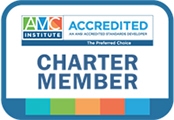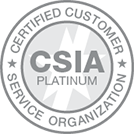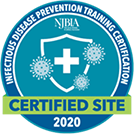Short-term planning replaces long-term vision for most associations
At the start of the year, AH released a series of predictions of what lies ahead for associations and non-profits in 2021. We're revisiting those predictions each month to see what's changed as associations and non-profits continue to adapt.
“If you don't know where you are going, you might wind up someplace else.” – Yogi Berra
On January 1, 2020, many people were doing their yearly personal strategic planning (i.e., making New Year’s resolutions). Nearly everyone thought they knew where they were going in the coming year — until they didn’t. When the COVID-19 pandemic hit two months later, many people suddenly found themselves in an extraordinary “someplace else.” So did associations and non-profits.
“In February, before lockdown, I was in two strategic planning meetings and they were focused on membership value, the annual meeting, and advocacy,” said Amy Williams, CAE, MPA, IOM, AH’s Vice President of Sales and Consulting. “The themes have since shifted.”
Revising Outdated Strategic Planning Models
Before the pandemic, many non-profit strategic planning models relied on the tried and true to deliver value to their members: through member publications and in-person annual meetings. But when lockdowns began and the world stood still, the frequency of information needing to be shared no longer met the pulse of a monthly or bi-monthly newsletter and many in-person gatherings were banned. A sweeping change in strategy was not only necessary, but a matter of survival.
“Because associations and non-profits are generally run by volunteers, change can be slow,” said Williams. “But the pandemic made everybody react so quickly, more quickly than associations ever had before. I think they’ve seen they can focus and accomplish a lot in a short amount of time.”
Travel and gathering restrictions caused most associations to hold their annual events virtually or to cancel them outright. But even when people will become comfortable travelling again, Williams mentioned that it may be harder for members to get travel approvals to attend in-person events, now that everyone knows there is a virtual option. The reality is that associations can no longer rely on the annual meeting as a cornerstone of their member offerings or in-person board and strategic planning meetings.
“I think there will be more focus on non-traditional programs and benefits,“ said Williams. “Many organizations have already started looking into possibilities, such as more robust online learning offerings and new ways of delivering content, such as podcasts. There needs to be new ways to deliver value for members.”
Strategic Planning for Financial Health
Unfortunately, a heavy reliance on the annual meeting as a major source of revenue came at a dire cost for some organizations that decided to cancel theirs altogether in 2020. Many associations are finding that, for the first time, they need to focus on their financial health.
“They now need to shift to find new forms of non-dues revenue or look at reducing costs, but in ways that aren’t going to negatively impact the membership,” said Williams.
Adaptive Shifts in Board Strategic Planning
Both before and after the arrival of COVID-19, many associations had already been experimenting with new ways to create that value.
A few of these nonprofit strategic plan examples include the Society For Biomaterials (SFB), whose aim was to engage their special interest groups resulting in a series of targeted webinars, and the American Society for Histocompatibility & Immunogenetics (ASHI), who looked to providing more robust content to members via the ASHI website and ASHI University.
Even organizations that didn’t originally have a digital content strategy or virtual education have found it is now a top priority for them.
The Association of Women's Business Centers (AWBC) had been originally been discussing the expansion of their online resource library and online training. But once the pandemic hit, they found they had to accelerate those plans. The National Association of Productivity and Organizing Professionals™ (NAPO), have also been implementing more online learning.
Others, like the Society for Technical Communication (STC), found that once their goals were reexamined during the pandemic, they were still focused on membership growth but decided to shift into different ways to accomplish it.
Investing in Nonprofit Technology
With the acceleration of delivering new online membership products, staying connected digitally, and streamlining efficiency in a time of upheaval, it stands to reason that most associations and nonprofits are making investing in technology a priority.
The American Society of Association Executives (ASAE) is currently in the middle of its own strategic planning process that had begun before the pandemic, with the vision of becoming a digital-first organization.
“That doesn’t mean we’re going to stop doing in-person conferences,” said Amy Hissrich, CAE at ASAE, in an interview with Boardroom, “ but it will mean taking more of an omni-channel approach to the way our members connect and learn within ASAE, where some in-person offerings will be reimagined for virtual formats that can be stream-able and on-demand. Our lines of communication are going to be critical to the success of our goals.”
Associations are also considering use newer technology to track their strategic planning and board governance to become efficient outside of strategic meetings.
“Right now, many organizations are just using Excel to track progress on their strategic goals, but I see more project management tools being used in the future,” said Williams. “These platforms have existed for years, but the pandemic has allowed associations to see them as an opportunity to provide better ways to track progress and work together.”
For example, Williams explains that one client, the Commission for Case Manager Certification (CCMC) is using a specialized software called Board Effect. Instead of just circulating a PDF, volunteers can share information from a board meeting with other volunteers, track committee activities, and collaborate more smoothly.
Board of Directors Strategy Meetings
Regarding the actual strategic planning meetings themselves, Williams affirms that the pivot to virtual strategic planning meetings has proven mostly effective. However, unlike the need to implement new technology to serve the membership at large, making a push implement unfamiliar meeting technology doesn’t seem like an effective strategy at the moment.
“The reality is that is has just been easier to use tools everyone is familiar with right now,” explained Williams. “If there is too much technology to learn, like a collaboration tool such as MURAL, associations will spend too much time learning and adjusting to the new platform, and it will cut into the actual strategic planning itself. I’ve often just used Google Sheets and shared it with volunteers during meetings.”
She also acknowledged that it can be harder to keep attendees engaged in a virtual setting.
“Many times, the virtual strategic planning sessions are broken up, instead of being held all in one day or over a single weekend,“ said Williams. “It can be hard to keep up momentum. It’s also more challenging to get volunteers together right now, as many have less time to dedicate to it. It used to be a strategic planning meeting could happen over a weekend. Now, however, remote work has often shifted into 24/7, and people are trying harder to protect their personal time.”
As a result, much like annual meetings, she sees post-pandemic strategic planning sessions moving to a hybrid format of in-person and virtual collaboration.
“Obviously, we’re hoping for in-person planning sessions, but not everyone can justify traveling to get to a meeting anymore since we now know we can do it remotely,” Williams said.
Strategic Planning for the Short Term
As much as the pandemic has advanced strategic change for associations and is forcing them to plan for shorter terms in uncertain times, Williams said that many organizations were already moving toward shorter-term, often three-year plans (instead of the typical five years).
“As it’s so hard to predict what will happen, I hope to see that continue. Being nimble is more of a priority now.”
However, there are some organizations that, due to the current inability to meet in person, continue to delay their strategic planning.
“I don’t recommend that,“ warned Williams. “If there is no overall, agreed-upon plan, not a whole lot gets accomplished. If you’re not focused on your association’s strategy and goals, you will only be focusing on the next shiny object and just flounder.”




